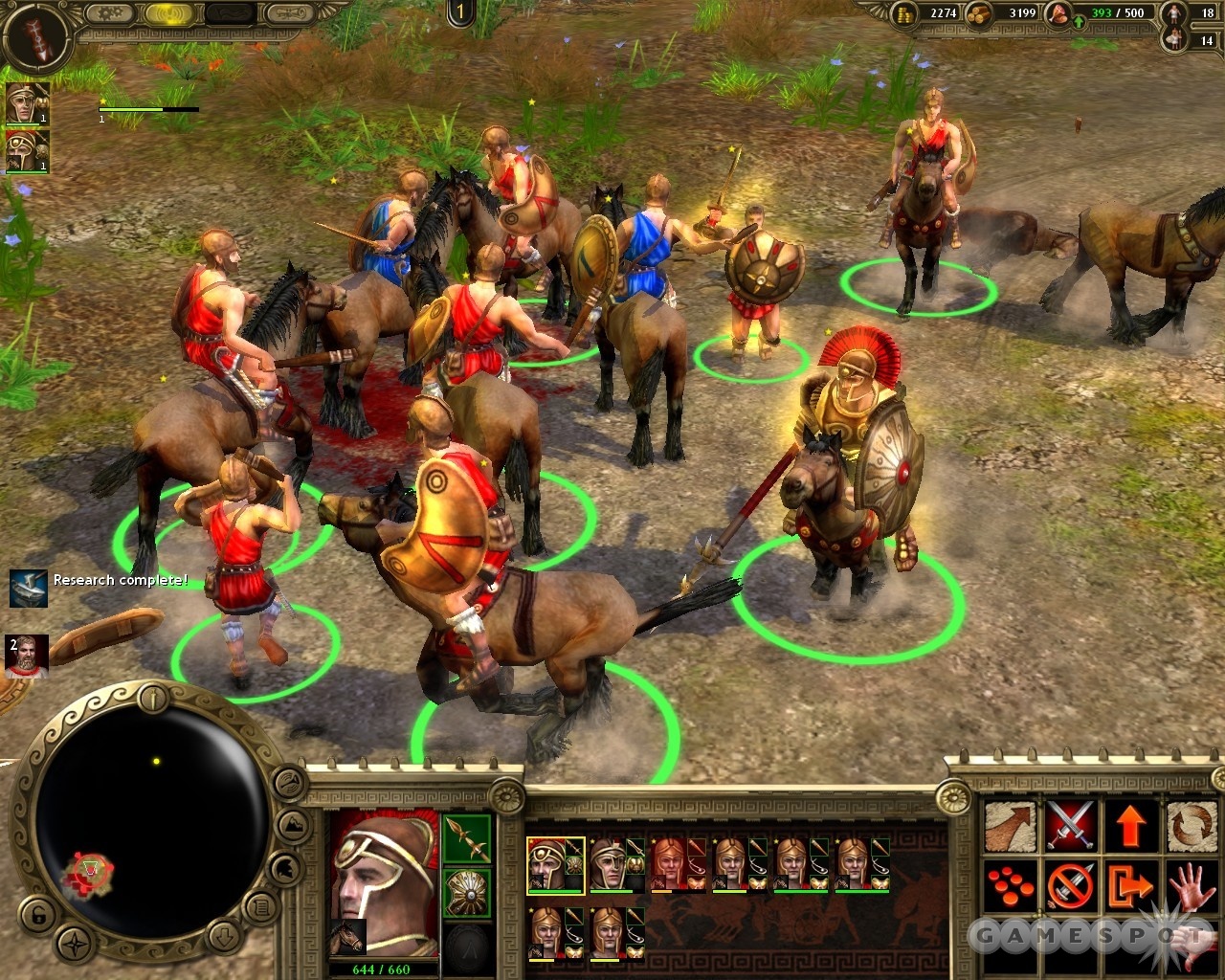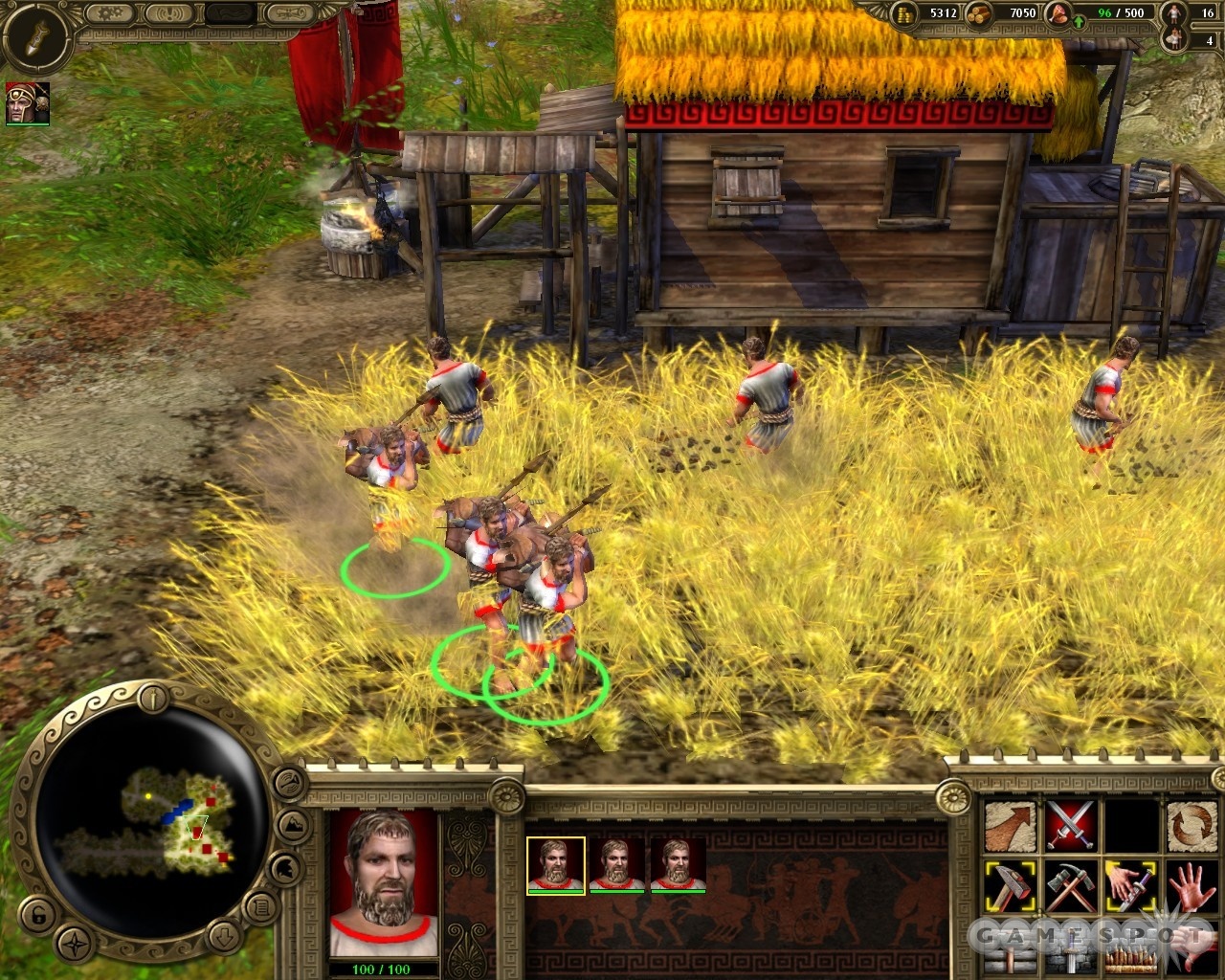Micromanagement is the only memorable aspect of Great War Nations: The Spartans, and not because it's a good thing. This base-building real-time strategy game from developer World Force is a paint-by-numbers production in every way, except for the extra steps that give you greater control over the finer aspects of researching technologies and equipping troops. However, each of these amenities is of questionable value, and they're so finicky and out of place in such a simplistic game that you'll quickly grow tired of all the fussing around and long for traditional RTS production lines.
Design basics are straightforward. This is a formulaic RTS game along the lines of Age of Empires, albeit a stripped-down model with two brief campaigns and multiplayer supported only through LAN. Despite the title, the campaigns actually have you guide the armies of both the Spartans and the Macedonians in a total of 14 missions. Expect to be disappointed if you're looking for a pure "This is Sparta!" experience in which you slaughter thousands of evil Persians.

The two main factions here are virtually identical, and they also match up perfectly with the Egyptians and Persians, which are available as playable nations only in skirmish play. Most differences are purely cosmetic, with bases, units, and buildings varying in name only from one faction to the next. Common shock troops are the same aside from appearance and name, which means that they're interchangeable in the way that they're deployed, regardless of whether you're using Spartan Spartiates, Macedonian Hetairoi, Egyptian Mighty Nadsez, or Persian Nobles. Only the Persians and Egyptians feel a bit offbeat, due to units such as war elephants and specialized priests, and even then many of their structures function the same as those of their Greek cousins.
Campaign missions are generic adventures in building up bases, gathering the same old wood, gold, and food, and grinding out the dozens of troops needed to destroy enemy bases. Great War Nations: The Spartans sticks to a familiar formula just about every step of the way. The only significant difference between it and a few hundred other RTS games is a fixation on micromanagement. You have to take a hands-on role when raising your armies instead of, for example, simply building barracks to crank out ground troops and stables to produce cavalry. Here, barracks are solely for creating soldiers, whereas stables are solely for creating horses. So if you want to field some cavalry units, you have to create riders and horses in separate production runs in separate buildings and then order your soldiers to jump on their mounts. This is sort of innovative, and certainly more realistic than the standard RTS in which you order up horses and riders together like Happy Meals from a drive-thru window. But the end result is still a stereotypical RTS cavalry unit, so all of this extra messing around amounts to nothing more than senseless busywork.
Other aspects of base management are just as irritating. Rather than simply researching new weapon and armor technologies in a single building to unlock troop types in the barracks, you have to follow a multistep process. First you research techs such as cold hammering and bronze casting in the forge. Then you have to switch to the workshop to construct the new weapons and armor (short swords, giant axes, round shields, and so on) that were revealed by your forge discoveries. Finally, you have to add these new items to soldier loadout specifications in the barracks and set up troop-design templates for production. The above example uses Spartan building types, but all three nations function in the same fashion with differently named structures. So the game remains the same even if you're controlling the Egyptians, who have houses of knowledge in place of workshops and weapons houses in place of forges.
At first, it's nifty to custom-craft your troops and experiment with different weapon and armor combos. Being able to fool around with different-sized shields and exotic weapons such as the Egyptian khopesh makes you feel like a real general outfitting an army. Additional military obligations during and after battles further this atmosphere. You can manually order troops to switch from melee to ranged weapons during fights, and even send workers onto battlefields after the dust settles to scavenge horses and weapons.
Yet the extra fuss here just isn't worth the extra bother, especially in such a simplistic game loaded with dull search-and-destroy missions that never involve tactical thinking. All you ever have to do on a map is churn out troops as quickly as possible and hurl them at the enemy base, so all of this fine-tuning and foraging soon seems like a total waste of time. Scrounging weapons and armor from fallen enemies is particularly bothersome, too, because the automatic gathering command doesn't work and you have to manually direct workers to pick up every abandoned sword and bow. In a more measured, more tactical RTS without so much nonstop combat, these sorts of considerations might add a lot of depth; in a simple-minded, fast-flowing game like this one, they just add a lot of irritation.

Other aspects of play are also somewhat annoying. Enemy AI is reasonable when it comes to attacking, although it tends to harass you with small probing assaults rather than building serious armies with the capability of razing your buildings and inspiring the lamentations of your women. Friendly AI is deeply dumb, with units so stunned that they often have to be manually guided through narrow sections on maps, such as gateways into enemy fortresses. Units are also picky regarding where you click on them, which forces you to make numerous tries before landing on the magic spot that lets you select them. Both of these elements make it seem as if you're never really in total control of your army.
Visuals are a little better than you might expect from such a budget production, with brightly colored maps and units, smooth animations, and an impressive range of small details when it comes to workers slaving away at fields, bellows, and the like. But these pluses are just about ruined by flickering, artifacting, a shudder effect that makes the whole screen seem to shimmer, and no support for widescreen monitors. Camera angles aren't great, either, due mainly to an inability to scroll out far enough to get a good look at the map. Audio is of slightly higher quality. Battle effects and order acknowledgements are appropriately bombastic, and the soundtrack features haunting tunes such as the ominous, flute-heavy Egyptian score.
Unless you're interested in overly fussy, old-fashioned RTS gaming, give Great War Nations: The Spartans a pass. Some of the ideas here are interesting to play around with for a couple of hours, but the novelty of turning out troops by hand soon wears off in the face of the game's slavish adherence to RTS formula and monotonous base-destroying missions.